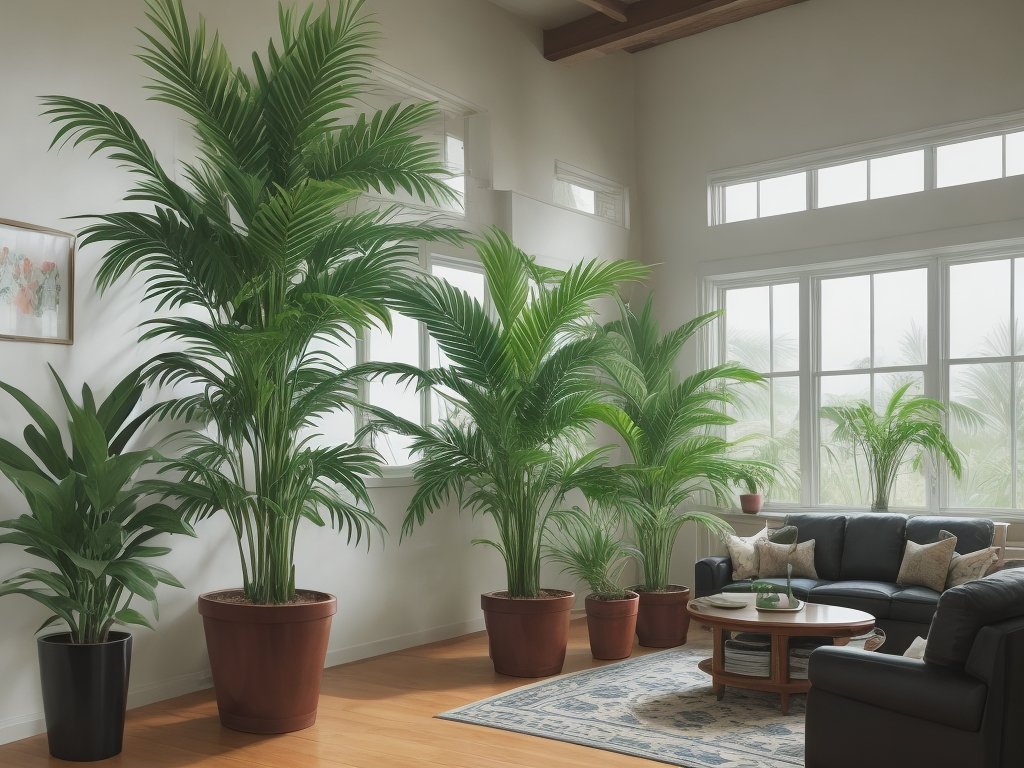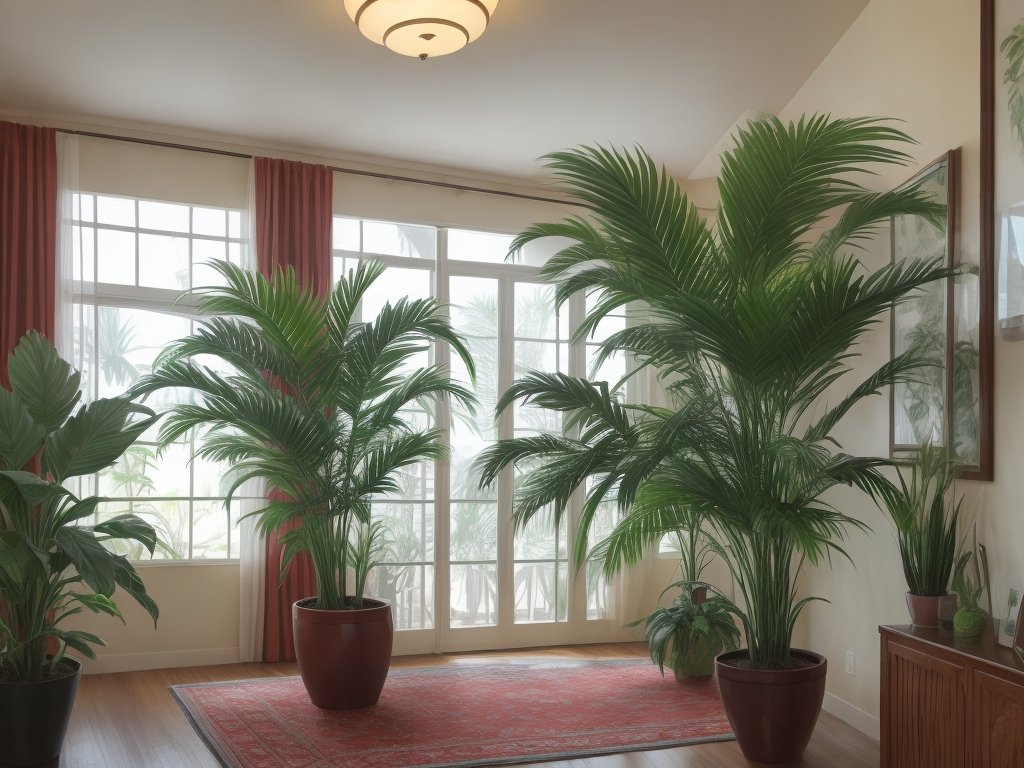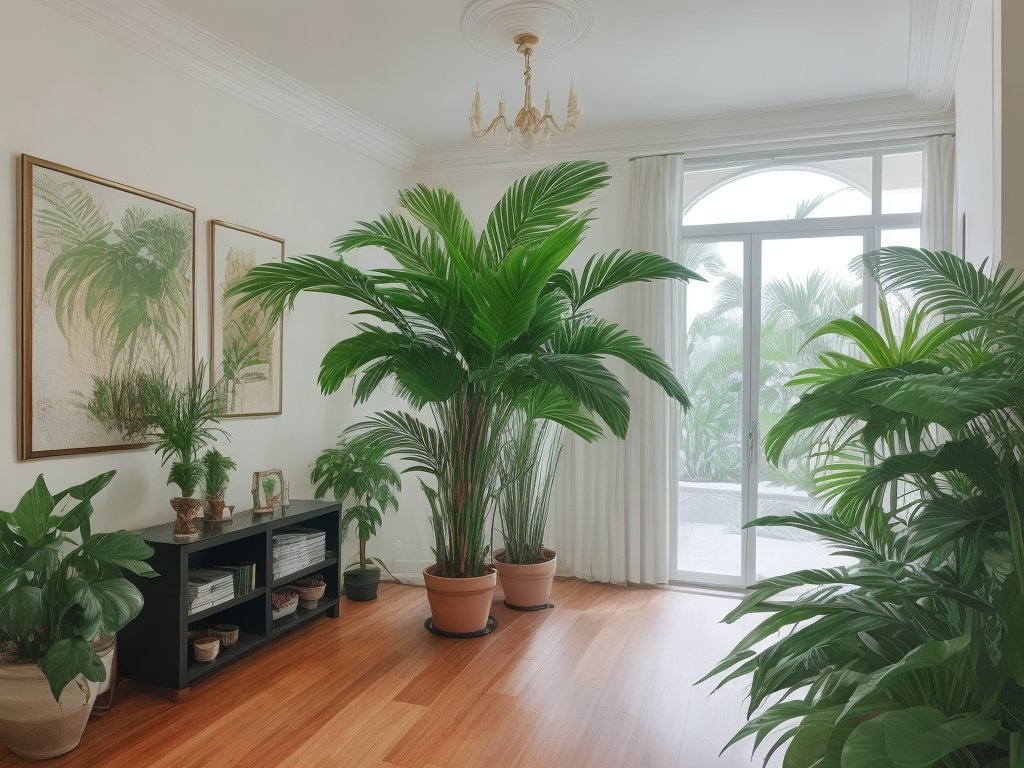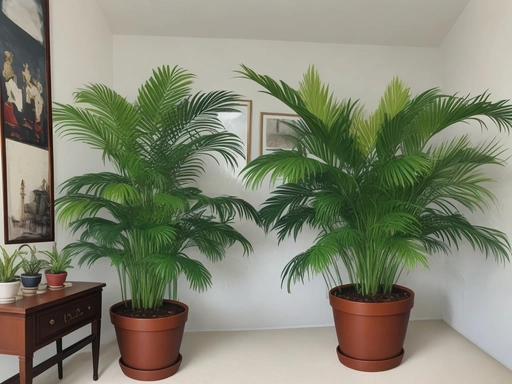Parlor Palm And Common Myths Exposed!
Key Takeaways:
- Parlor palms are low-maintenance and perfect for beginners.
- Contrary to popular belief, direct sunlight is not ideal for parlor palms.
- Overwatering can be detrimental to the health of a parlor palm.
- Despite their small size, parlor palms have powerful air-purifying abilities.
Are you a plant lover looking to add some greenery to your home?
Look no further than the Parlor Palm! In this article, I’m going to debunk some common myths and provide you with all the information you need to care for this beautiful and low-maintenance plant.
From identifying a Parlor Palm to understanding its origins and natural habitat, we’ll cover it all.
Plus, I’ll share some tips and tricks for watering, fertilizing, pruning, and more.
Get ready to transform your space with a Parlor Palm that thrives in any environment!
| Myth | Fact |
| Parlor palms are difficult to care for | Parlor palms are actually low maintenance and fairly easy to care for. They can tolerate a range of lighting conditions and need infrequent watering. |
| Parlor palms are toxic to pets | Parlor palms are non-toxic to cats and dogs, making them a safe choice for households with pets. |
| Parlor palms do not grow well indoors | Parlor palms are well-suited for indoor environments and can thrive if provided with the proper care, including the right amount of light and watering. |
| Parlor palms need frequent repotting | Parlor palms have a slow growth rate and usually do not require frequent repotting. They can thrive in containers for several years before needing to be repotted. |
| Parlor palms are not effective at purifying indoor air | Parlor palms are known to be effective at removing indoor air pollutants, making them a great choice for improving air quality in your home or office. |
About the Parlor Palm
The Parlor Palm is a popular indoor plant known for its elegant appearance and easy care requirements.
What is a Parlor Palm?
The Parlor Palm is a popular indoor plant known for its elegant appearance and ability to thrive in low light conditions. It features large, green, feather-like leaves that create a tropical vibe in any space.
This palm is relatively low maintenance and can be a great choice for beginners.

How to Identify a Parlor Palm?
The Parlor Palm has distinct characteristics that make it easy to identify.
Look for its tall, slender stems with long, feathery green leaves, often with a slightly arching growth pattern.
The leaves are divided into multiple leaflets, giving them a graceful appearance.
The plant usually reaches a height of 2-4 feet when mature.
Keep an eye out for these features to identify a Parlor Palm.
Origins and Natural Habitat
Parlor palms, also known as Chamaedorea elegans, are native to the rainforests of Mexico and Guatemala.
In their natural habitat, these plants thrive in the understory of the dense forest, where they receive filtered or indirect sunlight.
They also prefer consistently warm temperatures and high humidity levels.
This is why they make great indoor plants, as they can adapt well to the low light and dry conditions commonly found in homes.
Benefits of Having a Parlor Palm at Home
Having a Parlor Palm at home comes with several benefits. Firstly, it is a great air purifier, removing toxins like formaldehyde from the air.
Secondly, it adds a touch of nature and greenery to your living space, helping create a calm and relaxing environment.
Additionally, Parlor Palms are low-maintenance, making them ideal for busy individuals. They also thrive in low light conditions and can tolerate some neglect.
Lastly, this plant is pet-friendly, so you don’t have to worry about any potential harm to your furry friends.

Caring for Your Parlor Palm: Tips and Tricks
Taking care of your Parlor Palm is easy with these helpful tips and tricks.
Watering and Humidity Requirements
Watering:
- Water your Parlor Palm when the top inch of soil feels dry. Stick your finger in to check.
- Don’t overwater! Make sure the soil isn’t soggy or waterlogged.
- Use room temperature water and avoid using water that is too cold or chlorinated.
Humidity:
- Parlor Palms thrive in high humidity, but can tolerate average humidity levels.
- Increase humidity by misting the leaves or placing the pot on a tray with water and pebbles.
- Keep the plant away from drafts or dry air from heating or air conditioning vents.
Fertilizing Schedule
To keep your parlor palm healthy and thriving, it’s important to establish a proper fertilizing schedule.
Aim to fertilize your parlor palm every two to three months during the spring and summer months, using a balanced liquid fertilizer diluted to half strength.
During the fall and winter months, reduce the frequency to once every three to four months.
Avoid over-fertilizing, as this can lead to nutrient burn and damage the plant.
Always follow the instructions on the fertilizer packaging and adjust the schedule based on the specific needs of your parlor palm.
Pruning and Trimming Techniques
Pruning and trimming are important techniques for maintaining the health and appearance of your Parlor Palm. Here’s what you need to know:
- Remove dead or yellowing leaves: Regularly check your plant for any dead or yellowing leaves and gently remove them at the base. This will help promote new growth and prevent the spread of diseases.
- Trim overgrown stems: If your Parlor Palm is becoming too tall or leggy, you can trim back the stems to maintain a compact shape. Use clean and sharp pruning shears to make clean cuts just above a leaf node.
- Avoid cutting into the trunk: When pruning, it’s important to avoid cutting into the main trunk of the palm. This can cause irreversible damage and even lead to the death of the plant.
- Remove suckers or offshoots: Parlor Palms occasionally produce suckers or offshoots at the base of the plant. These can be removed and propagated to grow new plants, or you can leave them to create a fuller appearance.
- Prune with care: Pruning can be stressful for your Parlor Palm, so it’s important to do it in moderation. Avoid removing too many leaves or stems at once, as this can shock the plant. Instead, prune gradually and monitor how your plant responds.
Repotting Guide
Repotting your parlor palm is an important step in its care.
Here’s how to do it efficiently:
- Choose a new pot that is 1-2 inches larger in diameter than the current one.
- Gently remove the plant from its old pot, being careful not to damage the roots.
- Shake off excess soil and inspect the roots for any signs of disease or rot. Trim away any damaged roots with clean scissors or shears.
- Place a layer of fresh potting soil in the bottom of the new pot, then carefully place the parlor palm in the center.
- Fill in the space around the roots with more potting soil, gently pressing it down to secure the plant.
- Water your parlor palm thoroughly, allowing excess water to drain out of the bottom of the pot.
- Place the repotted plant in a bright, indirect light and continue with your regular care routine.

Propagation Methods
Propagation methods for parlor palms include division, offsets, and stem cuttings.
Division involves separating the plant into smaller sections, each with roots and leaves.
Offsets are baby plants that grow at the base of the parent plant and can be separated and replanted.
Stem cuttings are taken from the main stem and rooted in water or a suitable planting medium.

Frequently Asked Questions about Parlor Palms
Can Parlor Palms Survive in Low Light Conditions?
Yes, Parlor Palms can survive in low light conditions.
They are known to tolerate and thrive in environments with indirect or filtered sunlight.
However, it’s important to note that low light conditions may slow down their growth and they may require less frequent watering compared to when they are in brighter areas.
How Often Should I Water My Parlor Palm?
Water your Parlor Palm when the top inch of the soil feels dry. This usually means watering every 1-2 weeks.
Check the moisture level by touching the soil.
Avoid overwatering as it can lead to root rot. Let the soil dry out slightly before watering again.
Can I Keep a Parlor Palm in My Bedroom?
Yes, you can definitely keep a Parlor Palm in your bedroom! Parlor Palms are excellent indoor plants and they thrive in low light conditions, making them perfect for bedrooms. Just make sure to place them near a window where they can get some indirect sunlight.
Plus, their lush green foliage will add a touch of nature and serenity to your space.
So go ahead and bring some greenery into your bedroom with a beautiful Parlor Palm!
How Fast do Parlor Palms Grow?
Parlor palms are relatively slow growers compared to other plants. On average, they grow about 6 to 12 inches per year.
Factors such as light, temperature, and humidity can affect their growth rate.
With proper care, your parlor palm can reach its maximum height of around 6 to 8 feet in about 10 to 15 years.
Can I Keep My Parlor Palm Near a Vent or Air Conditioning Unit?
Yes, you can keep your Parlor Palm near a vent or air conditioning unit. However, it’s important to be mindful of the temperature fluctuations and air drafts that may occur.
To protect your plant, ensure it is not directly exposed to cold or hot air, as this can lead to stress and damage.
Consider placing a barrier, like a curtain or shield, between the plant and the vent or unit to regulate the airflow.
Final Verdict
The Parlor Palm is a beautiful and versatile houseplant that can bring a touch of nature to any indoor space.
It is easy to identify with its graceful leaves and can thrive in a variety of conditions.
Despite popular myths, the Parlor Palm can survive in low light conditions, requires regular watering, and can be kept in bedrooms without causing any harm.
With proper care, this resilient plant can grow steadily and make a stunning addition to any room.
So go ahead, bring home a Parlor Palm and enjoy the many benefits it has to offer.






